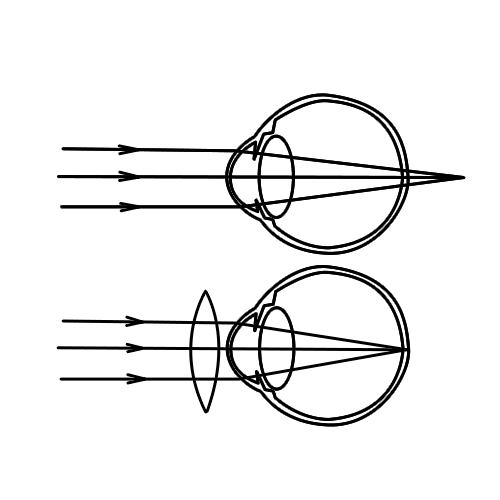| Hyperopia |
Hyperopia or Hypermetropia (far-sightedness)
In this condition incident parallel rays come to a focus behind the light
sensitive layer of retina. Most children are far-sighted early in life and need
no treatment for this because they can use their own focusing muscles to provide
clear vision for both distant and near vision. When an excessive amount of far
sightedness is present, the focusing muscles may not be able to keep the vision
clear. As a result of this, problems such as blurred vision, discomfort or
eye-strain especially after near work and crossing of the eyes may develop. A
prescription for hypermetropia will be preceded by a plus sign (+3.00 D).
 |
|
Top: Hyperopic eye. Below: Correction with a covex (plus) lens |
The role of the teacher
The effects of refractive errors are often first noticed in school. A child
cannot see the blackboard clearly, or finds it difficult to read or write. The
child may complain of eye strain or may have occasional crossing of eyes
especially towards the end of the day. You as teachers may be the first one to
notice the disability and can provide important input into the decision
regarding the need for glasses. When a child is prescribed glasses he/she needs
to wear them constantly. Since a teacher’s words carry a lot of weight for a
child, you may play a role in the initiation. The children who need patching of
one eye also need extra support so as to be comfortable in school. Teasing by
classmates is an important cause for refusal of the child to wear glasses or
undergo occlusion therapy.
Refractive Errors |
Myopia | Hyperopia |
Astigmatism | Anisometropia
|